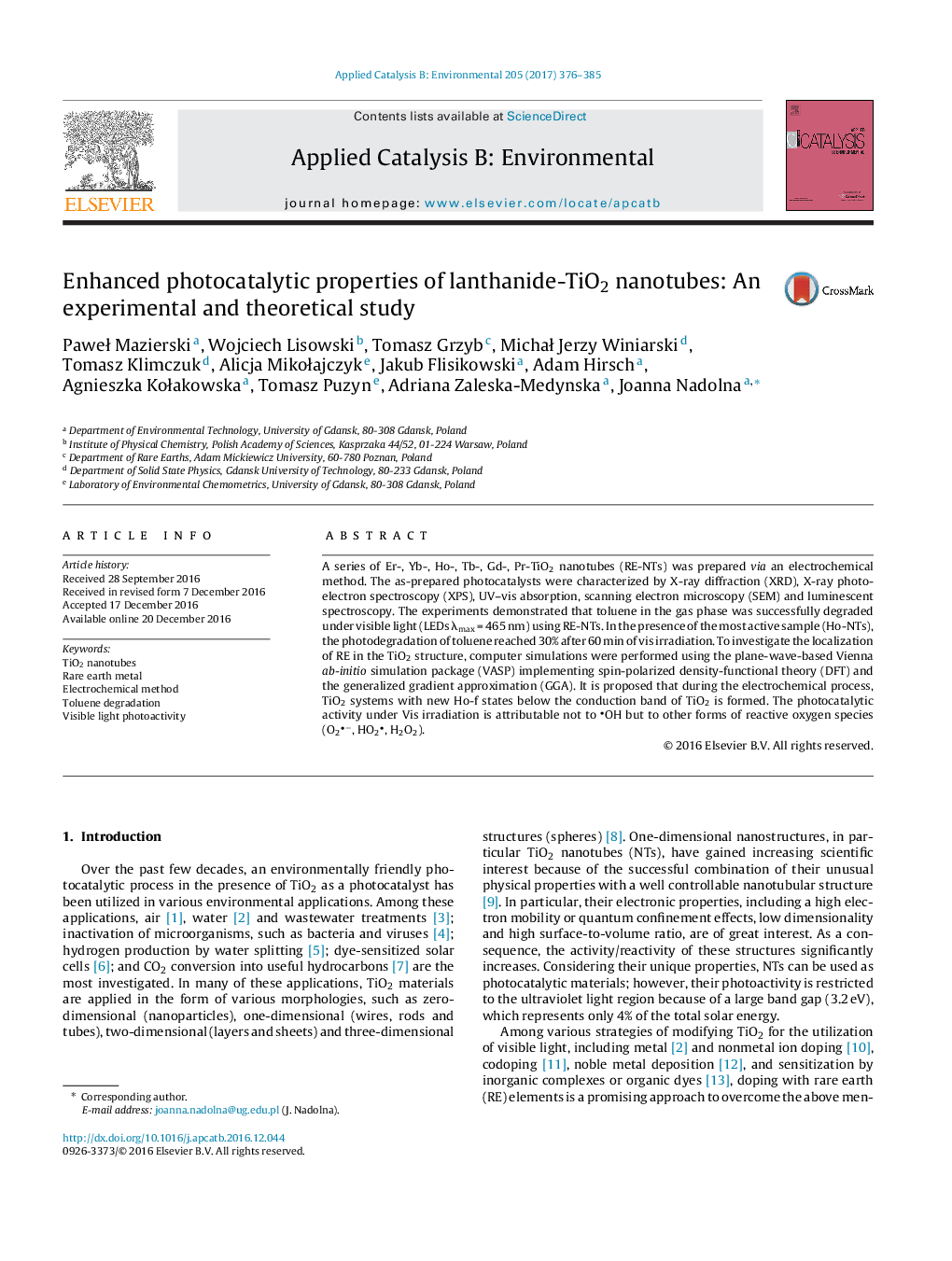| Article ID | Journal | Published Year | Pages | File Type |
|---|---|---|---|---|
| 6454348 | Applied Catalysis B: Environmental | 2017 | 10 Pages |
â¢During the electrochemical process, new Ho-f states below the CB of TiO2 is formed.â¢RE-TiO2 system leads to toluene degradation under LEDs λ = 465 nm irradiation.â¢Superoxide radicals are responsible for pollutant degradation over RE-NTs.
A series of Er-, Yb-, Ho-, Tb-, Gd-, Pr-TiO2 nanotubes (RE-NTs) was prepared via an electrochemical method. The as-prepared photocatalysts were characterized by X-ray diffraction (XRD), X-ray photoelectron spectroscopy (XPS), UV-vis absorption, scanning electron microscopy (SEM) and luminescent spectroscopy. The experiments demonstrated that toluene in the gas phase was successfully degraded under visible light (LEDs λmax = 465 nm) using RE-NTs. In the presence of the most active sample (Ho-NTs), the photodegradation of toluene reached 30% after 60 min of vis irradiation. To investigate the localization of RE in the TiO2 structure, computer simulations were performed using the plane-wave-based Vienna ab-initio simulation package (VASP) implementing spin-polarized density-functional theory (DFT) and the generalized gradient approximation (GGA). It is proposed that during the electrochemical process, TiO2 systems with new Ho-f states below the conduction band of TiO2 is formed. The photocatalytic activity under Vis irradiation is attributable not to OH but to other forms of reactive oxygen species (O2â, HO2, H2O2).
Graphical abstractDownload high-res image (112KB)Download full-size image
